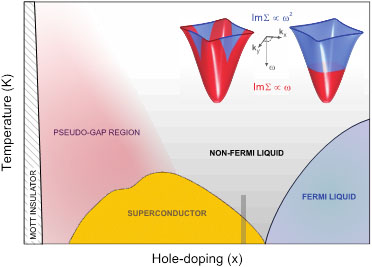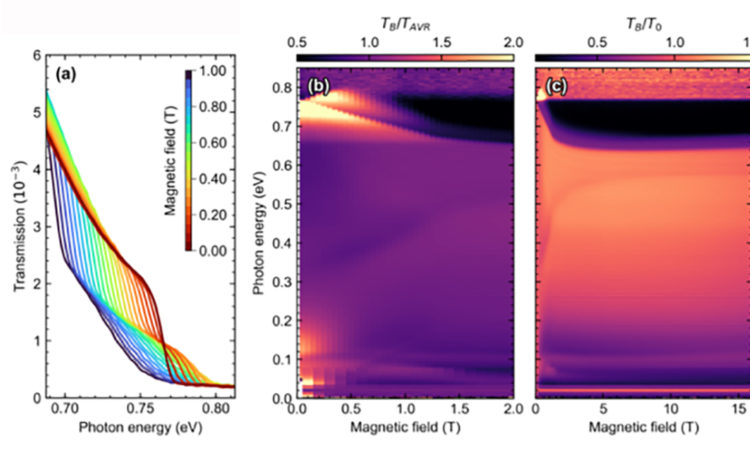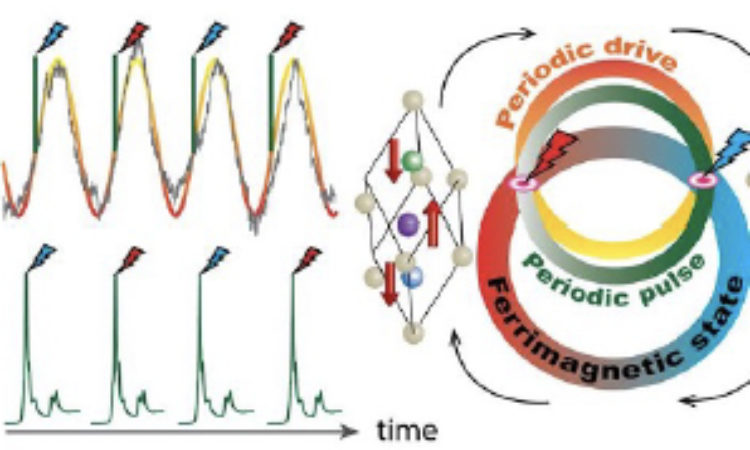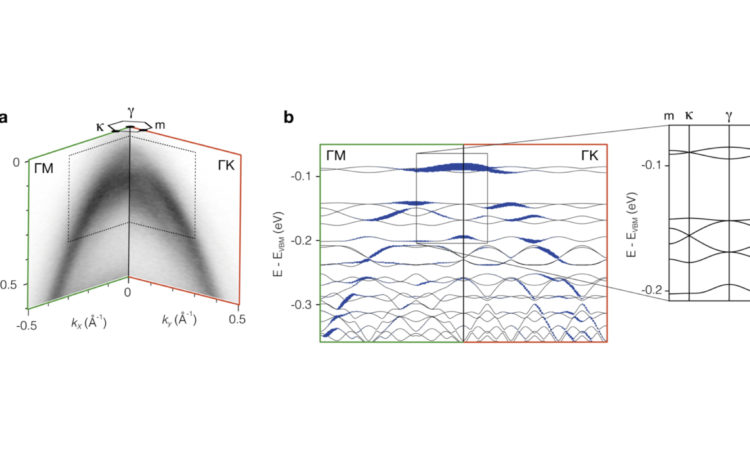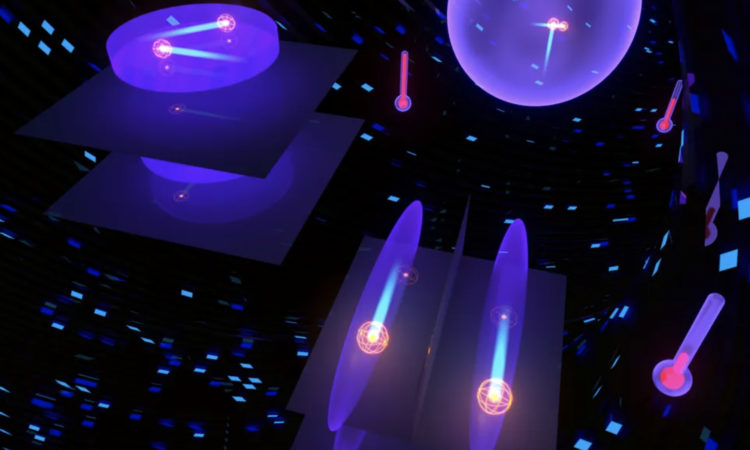Electrons with a “split personality” (Nature Communications)
Researchers from the Paul Scherrer Institute (PSI) have been investigating interactions of the electrons responsible for conducting electricity in the high-temperature superconductor La1.77Sr0.23CuO4 above the transition temperature. These experiments at the PSI revealed that electrons have a “split personality” meaning that they can have two different behaviours in the same material. This discovery is a significant contribution to understand high-temperature superconductors. Moreover, future experiments of high-temperature superconductors will have to take this effect in account. Results of this research have been published in Nature Communications.


By Johan Chang and Martin Mansson, PSI, EPFL
Based on article published in Nature Communications
Press release
in English
Understanding the origins of high-temperature superconductivity, the ability of some materials to conduct electricity without any resistance is one of the important questions of modern condensed matter physics. High-temperature superconductivity emerges from an un-conventional metallic state. This has stimulated strong efforts to understand exactly how Fermi liquids break down and evolve into an un-conventional metal. A fundamental question is how Fermi liquid quasiparticle excitations break down in momentum space. Here we show, using angle-resolved photoemission spectroscopy, that the Fermi liquid quasiparticle excitations of the overdoped superconducting cuprate La1.77Sr0.23CuO4 is highly anisotropic in momentum space. The break down of quasiparticle excitations is also anisotropic as a function of momentum. Part of the “Fermi surface” therefore displays conventional Fermi liquid quasiparticle excitations whereas on other sections non-Fermi liquid behavior is found. This kind of Fermi liquid breakdown may apply to a wide range of strongly correlated metal systems where spin fluctuations are present.
Landau theory of Fermi liquids, and its notion of quasiparticles, underlies much of our understanding of how electron interactions affect the properties of a metal. The breakdown of this concept has therefore been studied in great detail by transport and thermodynamic measurements. In this fashion the Kadowaki-Woods ratio that compares the temperature dependence of a metals resistivity with its electronic specific heat, thereby probing the relationship between electron scattering and renormalization of electron mass has been evaluated. A common assumption, often underlying the interpretation of such experiments, is that the Fermi liquid self-energy ImΣ is local, that is, that it depends only on excitation energy ω and not on momentum (k). This assumption is conveniently made since there exist relatively few studies of non-local Fermi liquids.
Angle-resolved photoemission spectroscopy (ARPES) is a modern technique that allows to extract the self-energy Σ(k, ω) that carries information about all correlation effects. The advance of applying a spectroscopy technique (over for example transport) is that by slightly compromising the energy resolution, it is possible to obtain a detailed insight to the momentum dependence of the self-energy. Using this technique, we demonstrated that quasiparticle excitations – found in overdoped La1.77Sr0.23CuO4 – are strongly anisotropic in momentum space and it is shown that the Kadowaki-Woods ratio is not constant along the Fermi surface. We find that true Fermi liquid quasiparticles exist around the nodal region, whereas non-Fermi liquid excitations provide a better description of the spectra found near the anti-nodal region (see schematic Fig. 1).
